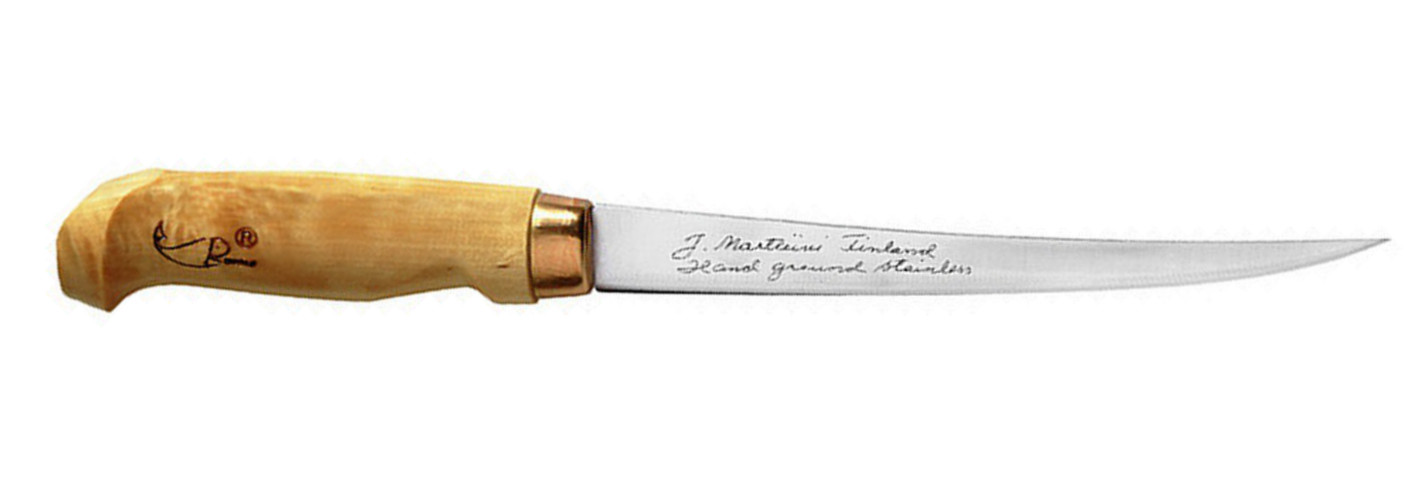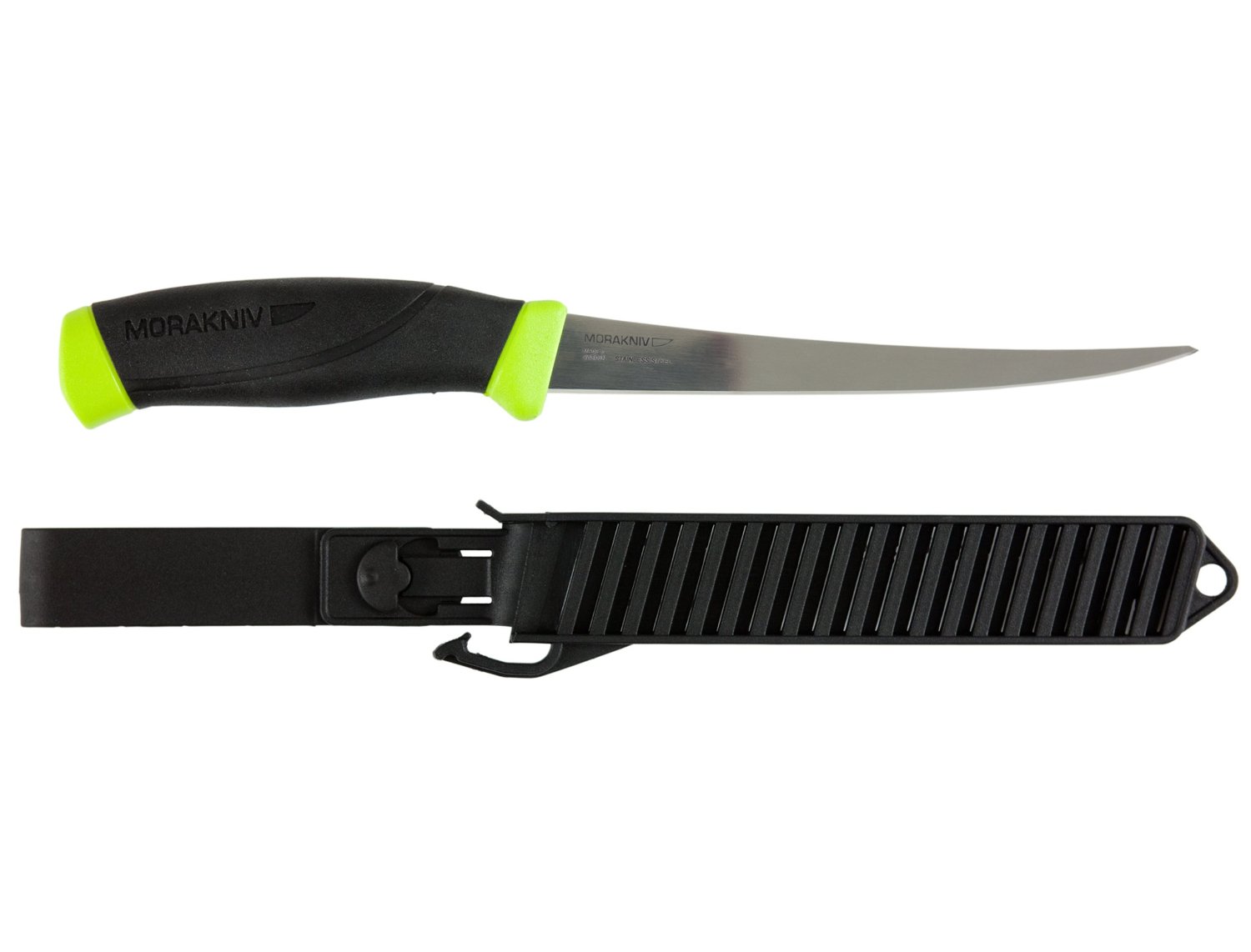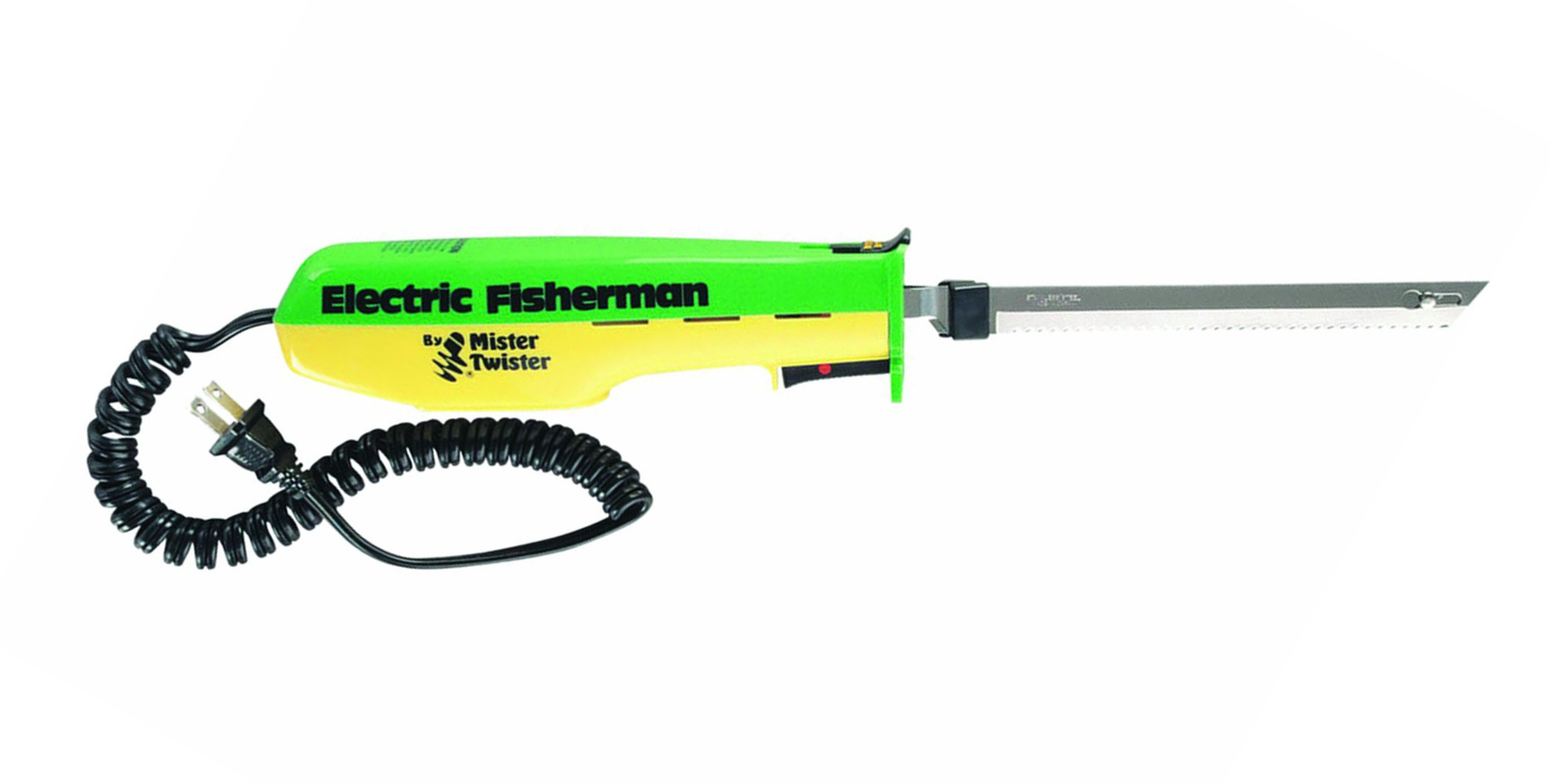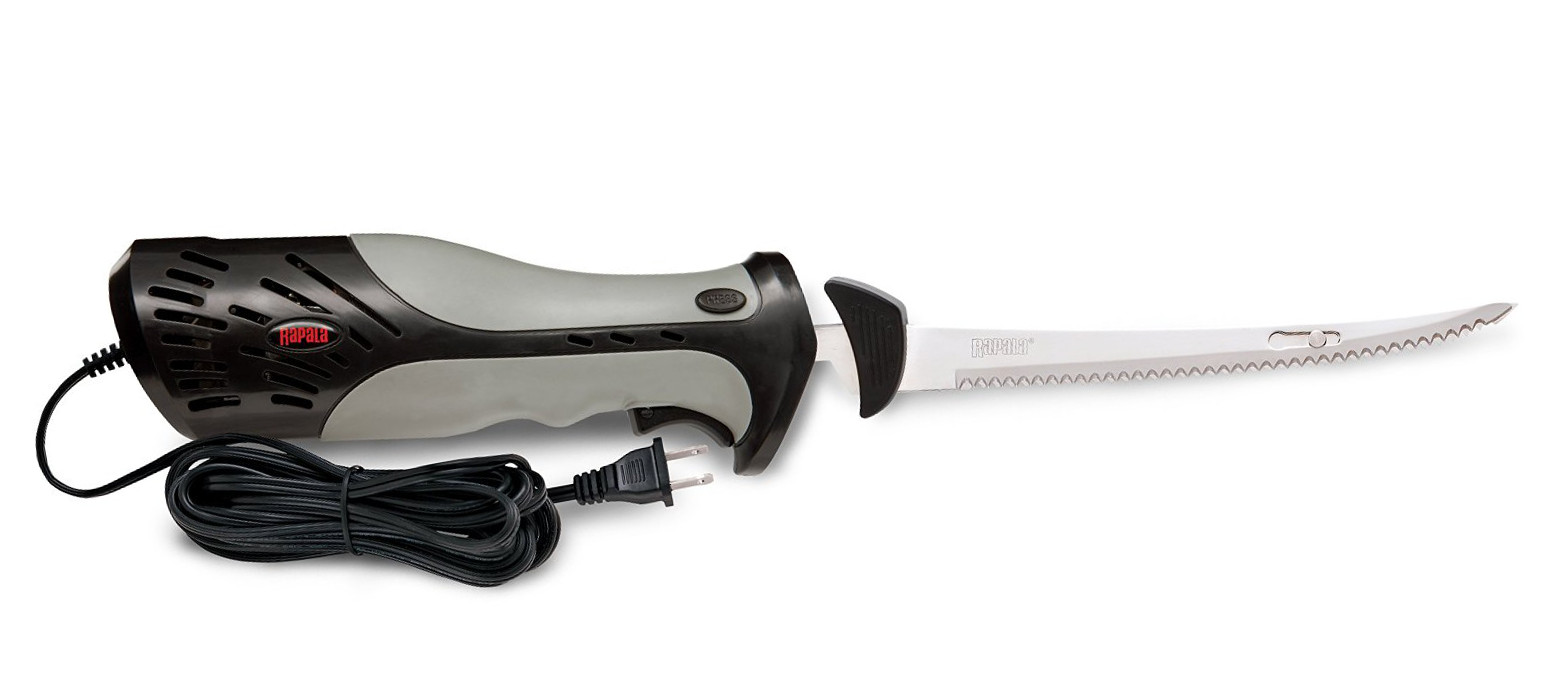Best Electric Fish Fillet Knife Reviews

While we generally support catch and release, fish can still be consumed in a sustainable manner by following legal guidelines. Sometimes the best way to reward yourself after a long day on the water is by taking your catch from the water to the table. Not only will it be fresh and delicious, but it’s a catch you earned and can cook how you like.
While different people will have different preferences for style of cooking, one thing is universal: you don’t want to waste any meat. Extracting as much meat as possible without damaging the texture and overall presentation can be difficult, which is why it’s important to have good tools at your disposal.
The most crucial step in preparing a fish for a meal is filleting the fish. It’s important to use the proper knife in order to ensure nice smooth cuts yielding as much meat as possible. Fish fillet knives are very popular now and the selection is seemingly endless, so it can help to know a thing or two about them before making a decision.
The information below will outline some of the best fish fillet knives at different price points, which we hope will allow you to discern some of the differences. Furthermore, we will provide our thoughts on what to look for in a fish fillet knife, helping to ensure a great meal!
Basic
Rapala Fish’n Fillet Knife

Pros
- thumbs-o-upCheap!
- thumbs-o-upScandinavian stainless steel blade.
- thumbs-o-upComes with leather sheath and single stage sharpener.
- thumbs-o-upAll-around length (7″).
Cons
- thumbs-o-downClassic Rapala reinforced birch varnished handle looks classy, but wood isn’t always preferred for safety reasons.
General Consensus
This is a great all-around fish fillet knife, especially for the cost. Coming in at the low end of price points for fish fillet knives, this Rapala knife is made of quality Scandinavian stainless steel, has a good amount of flex, and also comes with a leather sheath and single stage sharpener.
The main downfall of this fillet knife is the handle. While the glossy birch looks really nice and may feel comfortable at first, wood tends to become a little more slippery once you get to work. Also, this isn’t a huge issue if you ensure proper cleaning immediately after usage, but wood tends to absorb more of the juices than plastic or rubber, similar to a cutting board. This is also something to keep in mind from the safety side of things.
Overall, this is a great fillet knife for the money. If you’re on a strict budget this is still worth getting, as it’s really cheap for a fillet knife and is one of the most important tools you can have in the kitchen. Even those with a little more room in the budget would find this to be a great knife. Therefore, we recommend this fish fillet knife to anyone, just remember to clean the handle well!
Mid-Range
Morakniv Fishing Comfort Fillet Knife

Pros
- thumbs-o-up3.5″ blade is ideal for smaller fish, while 6.5″ blade is perfect for pan fish.
- thumbs-o-up0.05″ (1.3mm) blade thickness offer great flexibility.
- thumbs-o-upScandvik stainless steel blade.
- thumbs-o-upPatterned high-friction grip.
- thumbs-o-upPlastic sheath and belt clip.
Cons
- thumbs-o-downA little bit shorter of a blade, making it less ideal for larger fish like salmon.
General Consensus
This is an excellent fish fillet knife for small or medium-sized pan fish. The high quality Skandvic steel cuts through the meat like butter and the flex is there to allow for smooth tight cuts. The handle is great and offers extra grip to increase safety. The plastic sheath is ok, and the belt clip can come in handy for some.
The main drawback to this knife is that the largest size is 6.5″. This will do the trick for most purposes, but if you are catching and cooking larger fish, then you may have a tough task ahead of you. Aside from the limitations to the size of fish you can easily fillet, this is an awesome high-quality fillet knife that is very well-liked by customers.
Overall, we recommend this knife to anyone who is planning to fillet small-medium sized fish and has slightly more wiggle room in the budget. The mid-range price point is still pretty good, but if you are catching much larger fish it might not be worth it.
High-End
Wusthof Silverpoint II Fish Fillet Knife

Pros
- thumbs-o-upVery reputable brand.
- thumbs-o-upHigh quality materials.
- thumbs-o-upBlade is laser cut for consistent sharpness.
- thumbs-o-upLots of flex.
- thumbs-o-upGerman blend of steel.
- thumbs-o-upEasy to sharpen.
- thumbs-o-upSure-grip handle.
Cons
- thumbs-o-downOne size (7″), but at least it’s a good all-around size.
- thumbs-o-downFairly expensive.
General Consensus
This is another great fish fillet knife; however, coming in at a higher price point we don’t feel the value is quite at the level of some cheaper fillet knives. That being said, it’s still high-quality and a great all-around length that will work for lots of different sized fish. The main drawback of this knife, as we just eluded to, is the cost.
Overall, if you have a bit of room in the budget and want to ensure a high-quality knife from a very reputable company (and made in the “Cutlery Capital of the World”), then we definitely recommend the Wusthof Silverpoint II. Otherwise, if you need something a little cheaper, you can definitely find great value somewhere else, too.
What to Look For in a Fillet Knife
Blade Length and Flex
Most blades on fillet knives are made of stainless steel, so you usually don’t have to worry about that. Depending on where the steel is manufactured and the knife is assembled, there may be subtle differences in quality, but suffice to say stainless steel is what you want.
The main difference in blades is the length. Many fillet knives will come in different sizes, usually around 3-4″, 6-8″, and 9-11″. The shorter blades tend to be better for smaller fish. They are lighter and usually thinner, which also offers more flex. The combination of the short blade and flexibility allows for precise cuts in tight areas, allowing you to get as much meat as possible.
On the other hand, longer blades are nice for larger fish as there is way more meat to cut through, and the fish is generally much wide when laying flat. A more robust fish will call for a stronger blade, and therefore they longer blades are usually thicker as well, which doesn’t offer as much flex. However, in this case, fex isn’t as important, so that’s not a huge deal.
Then, there are the mid-range blades, which are nice if you want something “all-around”, or simply don’t know what size fish you will be catching and cooking. It may not be the best at the furthest extremes of fish sizes, but generally speaking, a mid-range blade is always great to have around.
Handle
The handle may not seem overly important, but lots of people find it makes a big difference. You will usually see one of three materials: wood, plastic, or rubber (or a combination). In terms of style, we love the look of wood handles, especially when engraved. However, wood handles can become quite slippery rather quickly and pose a potential safety hazard for this reason. If you’re careful, it shouldn’t be an issue, but it only takes one second of not paying attention to end up with stitches. For this reason, we tend to recommend rubber or plastic handles with grips designed for traction.
Furthermore, wood handles may absorb more of the juices from the fish than plastic or rubber. If you clean the knife immediately after using it, then that’s no problem, but it is something to keep in mind. For example, if you plan on cutting the fish on the boat or outside at a cabin and don’t want to be bothered with a thorough cleaning immediately, then it may be best to take caution and use a plastic or rubber knife.
Also look for handles with finger grooves, or at least a slight projection coming out between the blade and where your index finger will sit, as this will help avoid any slippage while cutting. Handles with groves are often more comfortable, but aside from personal preference, don’t make a huge difference in the performance of the knife.
Additional Items
If you’re looking for good value in a fillet knife and are deciding between a few different options, check to see if the knife itself comes with anything extra. For example, many knives will come with a sheath that allows you to cover, store, and carry the knife when it’s not in use. Some of these sheaths will come with loop or clips for your belt, which may be handy for some.
Sometimes, but less frequently, you may also be able to find a deal where the knife comes with a protective gloves, sharpening stone, carrying case, or something else that can be convenient to have. While these shouldn’t be the focus of your search, they may offer incentive to choose one fillet knife over the other.
Best Electric Fish Fillet Knife
If you already have a solid fillet knife, but simply want to make the task easier and quicker, then we would highly recommend considering an electric fillet knife. An electric fillet knife works similar to most other styles of electric knives. An electric fillet knife comes with a rotary motor that will move the handle back and forth very rapidly. So while your hand may be moving slowly, the rapid action of the blade when lightly pushed through the meat will allow for a clean smooth cut with way less effort involved
Since these are quite a bit different from knives without motors, we decided to offer our opinion on some of the best and most popular electric fish fillet knives at various price points:
Basic
Mister Twister 120V Electric Knife

Pros
- thumbs-o-upAffordable.
- thumbs-o-upConvenient blade release.
- thumbs-o-upSafety lock.
- thumbs-o-upSurprisingly good performance for a lower-end model
Cons
- thumbs-o-downLimited by cord (2 feet when coiled, 6 feet when stretched).
- thumbs-o-downWon’t lock on, need to keep button pressed when using.
General Consensus
This is a very basic electric fillet knife that gets the job done. There’s nothing fancy about it, but most people find it to be a really good knife, especially considering it’s one of the cheaper ones you can get.
In terms of the blade, it will come with the knife (as it should), but once it becomes dull, instead of sharpening you usually just have to order a new one. They’re pretty cheap though, and if you have a few spares on hand, it can actually be quite convenient.
The main drawback to this electric fillet knife is the cord. There’s nothing bad about the cord itself, just the fact that it’s there. This means you will be limited to a location that has a 120V outlet. These are the most common outlets, but with a cord length under 6′, you will be rather limited to where you can use it especially if you want to ensure you have enough slack to maneuver the knife and make good cuts.
Overall, this electric fish fillet knife offers great value. There’s nothing fancy about it, but at a very low cost, it gets the job done much easier than expected, definitely an improvement on most standard fillet knives. Therefore, we recommend this knife for most cooks looking to fillet their fish (expert cooks may desire something more advanced), but especially those who haven’t tried an electric fillet knife before and want to get the hang of it before buying into something way more expensive.
Mid-Range
Rapala Heavy-Duty Electric Fillet Knife

Pros
- thumbs-o-upGreat knife at a mid-range price point.
- thumbs-o-upTwo blades provide more speed and power than most electric fillet knives.
- thumbs-o-upBetter at cutting through bones.
- thumbs-o-upVery comfortable grip.
- thumbs-o-upDishwasher-safe.
Cons
- thumbs-o-downLimited by the cord (approximately 4 feet or so).
- thumbs-o-downIncrease in speed and power comes with an increase in cost relative to baseline models.
General Consensus
This Rapala electric fish fillet knife is a step up from the lower-end Mister Twister electric fillet knife. Basically the only differences are the speed and power, as well as a slightly more comfortable grip.
Similar to the Mister Twister, you will be limited by the cord on this Rapala model, but if that isn’t an issue for you, then this is definitely one of the better electric fillet knives out there, especially for the price.
Overall, this can be considered a high-end electric fillet knife for one that has a cord. The speed and power are definitely noticeable better than a lot of other models, and this is due in part to the opposing action of the two blades. Therefore, we recommend this knife to those who already have some experience using electric fish fillet knives and want something that performs very well, but don’t really care about whether or not it’s cordless.
High-End
Berkley TEC TurboGlide Electric Fillet Knife

Pros
- thumbs-o-upCordless.
- thumbs-o-upComes with carrying case.
- thumbs-o-upRechargeable Lithium-ion battery.
- thumbs-o-up7.5″ blade is an all-around good size.
- thumbs-o-upLightweight.
- thumbs-o-upGood speed and power.
- thumbs-o-upBuilt-in airflow and heat shielding system.
Cons
- thumbs-o-downExpensive.
- thumbs-o-downSome customers have experienced battery issues.
- thumbs-o-downNeeds to be recharged fairly often if you use it lots.
- thumbs-o-downAccessories not that great.
General Consensus
This is an excellent electric fish fillet knife. The biggest component that sets this apart from other electric fillet knives is the cordless design and the rechargeable Lithium-ion battery. This means you are not at all limited to where you fillet the fish, and ease of movement will help ensure proper cuts, especially when things start getting a little more slippery.
As with any product that runs on rechargeable batteries, the battery can be one more thing to worry about. You will want to make sure it’s fully charged before using, especially if you have lots of fish you need to get through. Some customers have had complaints about the lifespan of the battery, but it overall it seems to be pretty stable.
Overall, we would recommend the Berkley TEC TurboGlide electric fillet knife to anyone who wants or needs a cordless electric fillet knife. It’s a little bit more expensive, so it is better suited as a gift or an upgrade to a knife you may already be using (i.e. may as well learn on something cheaper then move up to this model). The battery may not last quite as long as you want it to, but the fact that it’s rechargeable, and once charged can be used anywhere, makes up for this in our opinion.
What to Look For in an Electric Fillet Knife
Most of the points we touched on in our information about fillet knives above holds true here as well. However, now that we are introducing a couple new features, there are now a couple extra things to consider as well before you decide on a knife.
We have also found a very informative video originally posted by Bob McNally demonstrating two types of electric fillet knives. One is the Berkley electric fillet knife we reviewed above, and the other is a Rapala electric fillet knife. Both are great companies, but similar to what Bob mentioned in a comment on the video, we also prefer the Berkley model a little more than the Rapala knife. There Berkley one comes with a few handy accessories, and on the whole, there tend to be less complaints about the Berkley knife. Both are good though, so if you tend to favor Rapala products in general, there’s nothing wrong with their knife either!
Plug-In or Cordless
Usually the cheaper models are plug-in, which is partially what allows the cost to be lower. One advantage is that plug-in models generally run a little more consistent and you don’t need to worry about any battery issues, but you are limited to locations with a proper outlet and also risk cutting through the cord. Frankly, the cord can be pretty annoying to, like a scaled-down lawn mower.
Cordless fillet knives are quite popular and are very convenient, you just have to remember to have them charged for when you need them, or for others, you may have to replace the batteries altogether. Nevertheless, the convenience of use can definitely make this worthwhile.
On that note, in addition to the type of power involved, pay attention to the power source as well. For example, some electric fillet knives may come with lighter plugs that can offer your car as an additional source of power (for recharging obviously, let’s hope you’re not filleting in your car…), which can come in handy and maybe make the difference in your decision.
